The spot at the top of the hamstring where the buttock ends can be the site of much pain. Or is it tightness? It is often difficult to tie down what it is and thus it is difficult to know how to treat it.
There are several common options that could be the source of your buttock pain:
- Tear or strain of the hamstring
- Tendinopathy of the hamstring
- Gluteal strain – not common
- Nerve irritation – referred from the back
- Sacroiliac joint dysfunction
- A combination of some or all of the above
Following is a method to try to separate out the pieces for yourself.
The way to assess for a strain of the hamstring or glute is to stress the muscle and see if it hurts. If there is pain on stretching the hamstring or glutes especially sharp pain, there is likely to be some tissue damage.
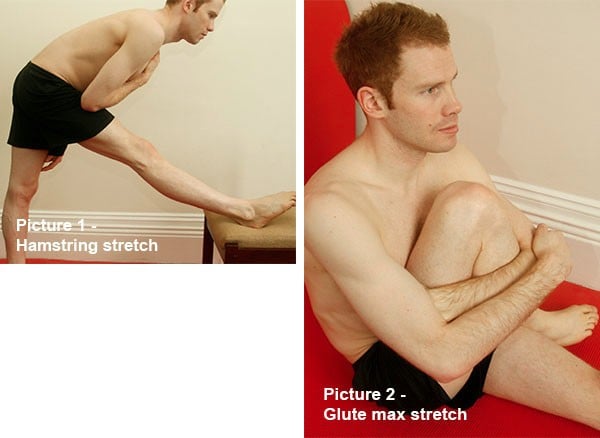
If you then have further pain when contracting the hamstring or glute, especially sharp pain, then it is likely that you have a tear in tissue.
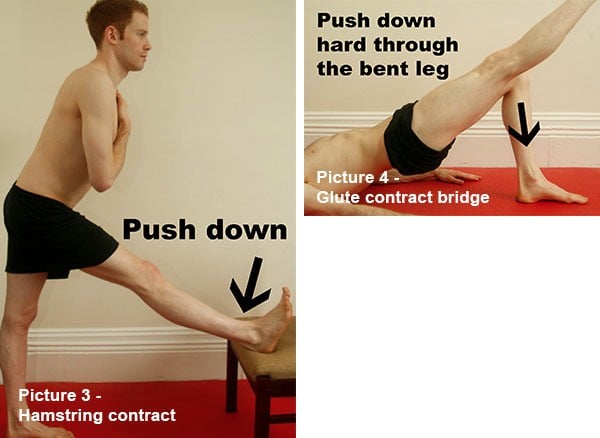
This needs to be rested and treated with easy stretching, massage and only begin to load the muscle once the above tests are clear. This can take 5 to 10 days. There is usually a sudden onset, say during a run, but not always.
Tendinopathy of the hamstring is more difficult to assess yourself. There is rarely pain on the tests described above but there is a tender spot just down from the bone that you sit on. The tendon feels thicker and stringier than the other side. The history is of a gradual onset of pain and is often associated with pelvic dysfunctions as described later. The presentation is of more of a dull ache and stiffness in the hamstring when running which warms up a bit but generally is just there!
All of the above are associated with sciatic nerve irritation. The sciatic nerve passes through the glutes and into the leg at the top of the hamstring. Issues in this area have the effect of upsetting the nerve and causing protective tightness. This can last longer than the actual strain or inflammation because nerves are slow to settle down.
There are ways to specifically test nerves but all are difficult on yourself. However using simple lower back and nerve stretches as shown will help in the mobilisation of the nerve. By putting yourself in the position below with a straight leg and doing small movements with the foot – pulling the foot up and down - 20 times x 3 sets 4 times a day will help to mobilise the nerve.
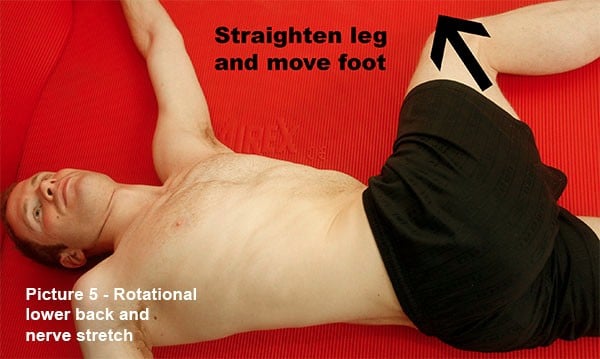
To treat a fresh tear of the muscle requires 4 to 6 days of rest and the previously painful tests need to be pain-free. Once this has settled then you can start to mobilise the sore areas with a ball as shown. Try to do a couple of minutes twice a day but not too hard as it is repairing tissue and you just want to mobilise it not break it.
In an older, more chronic problem which is comfortable to perform the tests on but sore to touch and to run then a more aggressive approach is required. These need a lot of mobilisation of the stiff and grotty tissue. These need around 2 minutes 4 times a day, every other day and hard!
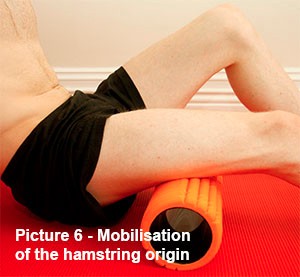
Further the hamstring needs to be strengthened with a combination of work in the gym and at home. The simple hamstring machines are a good place to start as they provide basic concentric and eccentric loading of the tissue and therefore strengthening. You need to work it hard though and 5 sets of 8 reps at the weight that is fatigued at 8 reps is the normal protocol.
Other things to do are bridging with your foot on a gym ball and slowly straighten and bend the knee – single legged. Doing 3 times 15 will be fine.
The final note here is that many of these chronic issues have a pelvic or sacroiliac joint dysfunction at their core. It is worth trying to mobilise this yourself by using the Push exercise below. Grip your knee and press as hard as possible into your hands. The object is to try to straighten the hip not the knee. Repeat 10 lots of 5 second presses hourly through the day.
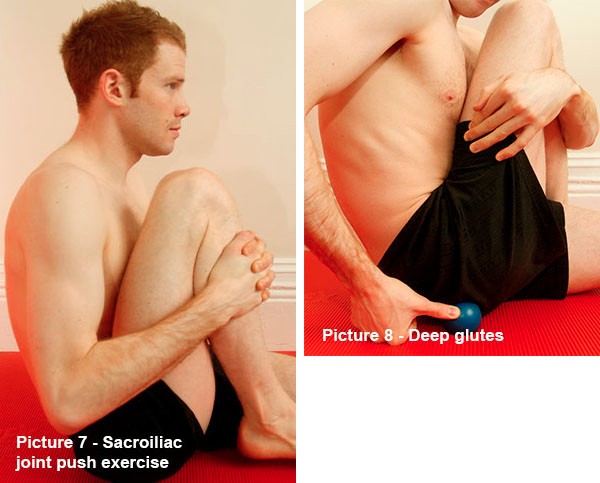
The deep glute muscles also always become very tight and using a ball as shown to work into the muscle is helpful. Do 2 minutes a few times a day.














